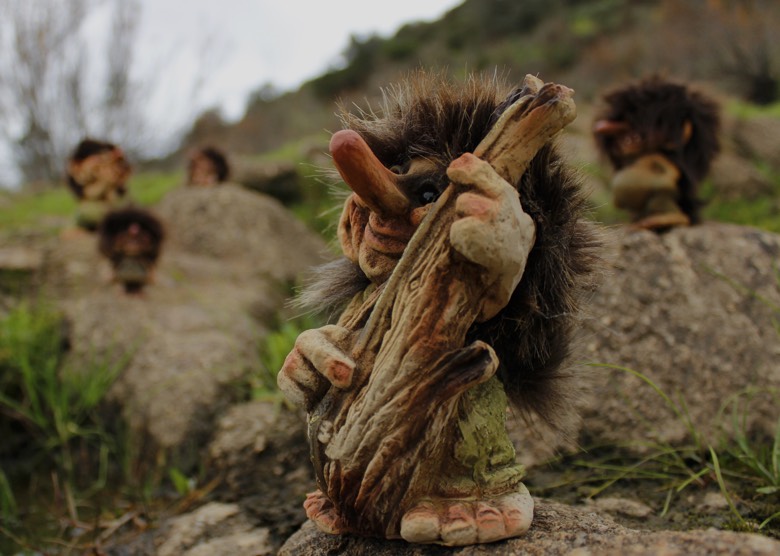
You may have driven Trollstigen or hiked to the Troll's Tongue, but how much do you know about the mythology?
Whether it’s a tacky figurine lined up on a gift shop shelf ready to give you that ‘perfect’ souvenir, or a fluorescent haired cartoon toy aimed at entertaining children, we all know trolls. Or do we?
Trolls call me
moon of dwelling-Rungnir,
giant’s wealth-sucker,
storm-sun’s bale,
seeress’s friendly companion,
guardian of corpse-fiord,
swallower of heaven-wheel;
what is a troll other than that?
Trolls are one of the mythical creatures that are portrayed in popular culture on a regular basis.
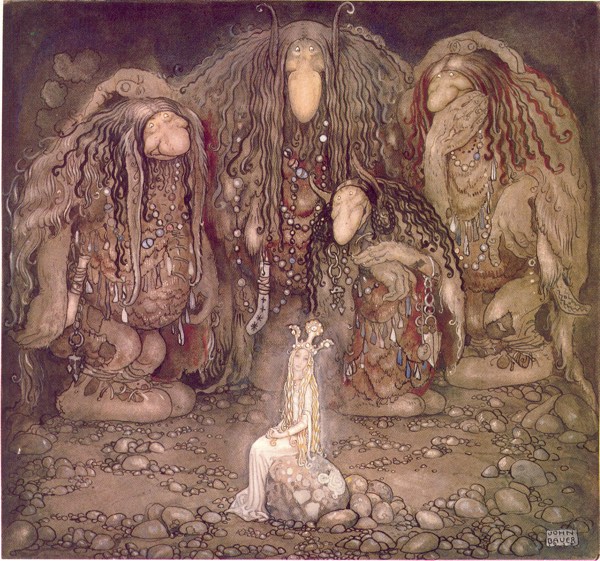
We’ve seen them helping Queen Elsa in Frozen, trying to cook Hobbits in the Lord of the Rings and guarding bridges to the annoyance of our fairy-tale heroes. Each portrayal is slightly different from the last.
So where do our mythical trolls come from? And what are ‘proper’ trolls like? Well, the answer to that, as always, is complicated! Join us as we go into the Hall of the Mountain King and try to get to the bottom of the legends.
The origins of the mythology
As Norse mythology was mostly handed down orally, it can be difficult to get a real handle on what’s what.
Gods and monsters are referred to by different names and when we come to interpret the source material – the Poetic Edda and Prose Edda that were the best attempts at writing everything down – we find various scholars disagreeing on almost everything!
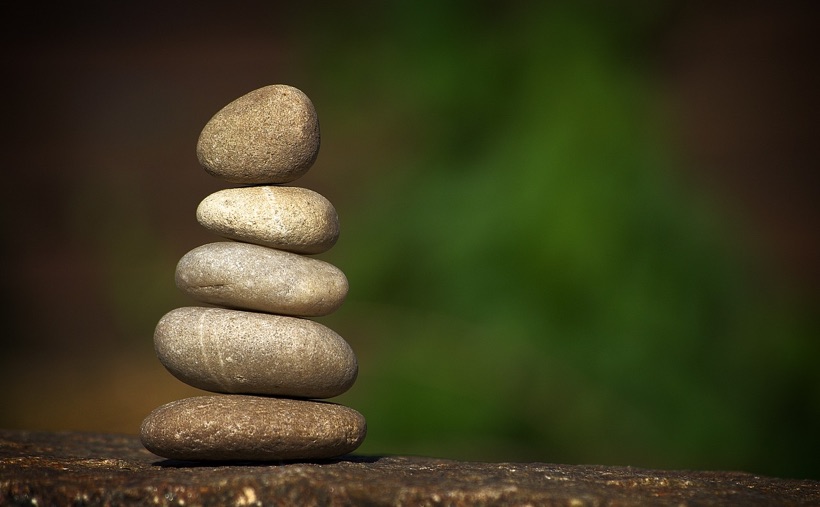
The noun troll or troll, meaning variously fiend, demon, werewolf and giant, comes from a proto-Germanic word trullan or unknown origin.
There’s much overlap in the terms jötunn (giant), troll, þurs (hostile monsters) and risi (heroic beings). Some theorize that they’re four distinct classes of beings while others believe that troll is a catch-all for ‘mischievous creatures.
What we do get a kind of agreement on, when we distil all of the arguments down, is that there are two types of troll.
Trolls of the mountain and of the forest
The first type is known as the forest or mountain troll. They’re generally depicted as large, dumb, brutish creatures akin to a large neanderthal. These are the beings that eat hobbits for dinner in Lord of the Rings or distract from Voldemort in Harry Potter.
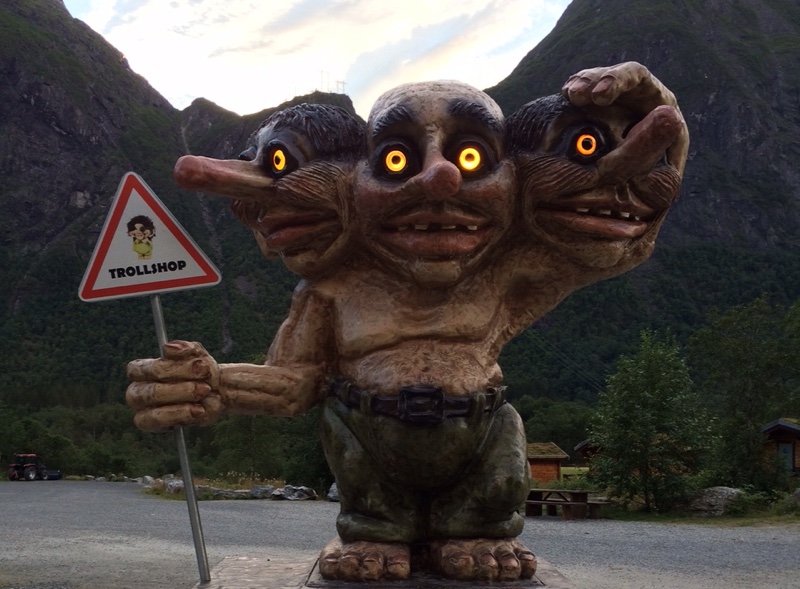
They are said to use their connections with nature to uproot trees to use as clubs as well as being able to cause hurricanes and avalanches.
These are also the trolls whose riddles you have to solve to cross a bridge, if you ever find yourself inside a fairytale, or playing an RPG!
Trolls of the caves
Unlike their forest-dwelling cousins, cave trolls live completely underground and are generally depicted as smaller than humans with a large round abdomen and short stubby arms and legs. These are more akin to the trolls that help Queen Elsa in Frozen.
In Norse mythology, however, they’re not generally friendly to humans. They use their connections with nature to baffle and deceive humans.
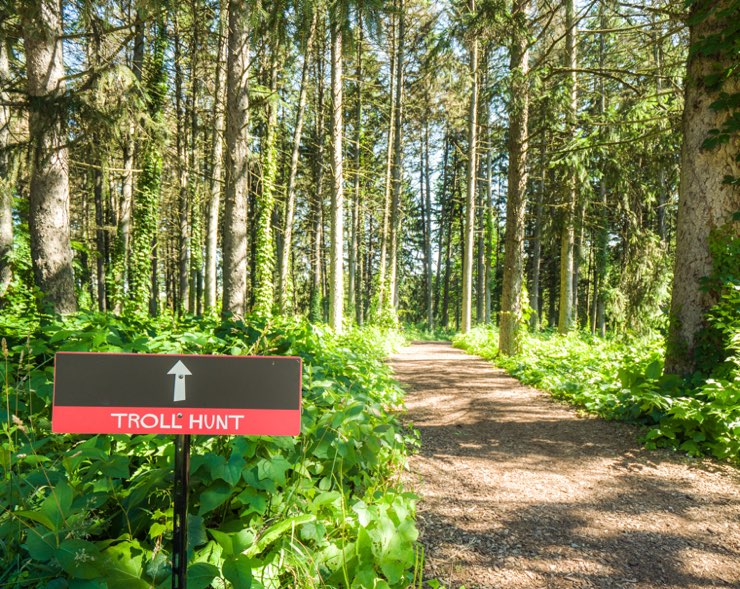
No matter the type of troll, they all have some characteristics in common. Aside from being unfriendly, they’re also generally depicted as stupid and dangerous. They may set clever riddles but they’re usually easy enough for humans to overcome.
Getting the better of trolls
One tale tells of Askeladden, the youngest son of a farmer who needed wood from the forst to pay off his debts. When his first two sons went into the forest and returned empty handed – having been scared away by the troll – Askeladden went into the forest with a piece of cheese to keep him from starving.
When he encountered the angry troll, Askeladden pulled out the piece of cheese and, pretending it was a rock, squeezed it until the whey came out.
Thus, the troll was fooled and, fearing his great strength, offered to help the boy with his wood cutting.
After working hard, the troll invited the boy back to his home for a meal. As he was tending the fire, he pointed to two huge buckets and asked the boy to fetch water.
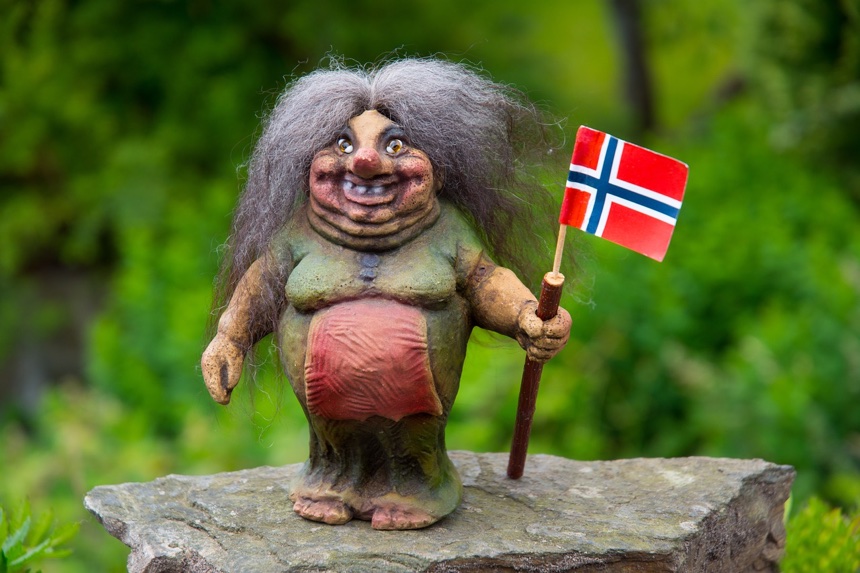
The boy realized that he couldn’t carry such massive buckets, let alone filled with water, so he claimed they were too small and that he would simply bring the whole spring instead.
The troll obviously didn’t want a whole spring in his house and so they exchanged chores. The boy tended the fire while the troll went to get water to make porridge. Once it was ready the boy suggested they have an eating contest.
They ate as much as they could, however the boy had placed his knapsack under his shirt and was filling it with the porridge, without the troll noticing. Once it was full he slashed a hole in it and continued to eat.
Once the troll was full and could eat no more, the boy suggested that the troll cut a hole in his stomach, like they boy appeared to have done, so that he could eat as much as he liked. The troll, being rather stupid, did so and promptly died. Thus, the boy took all of his gold and silver and the farmer could pay off his debts.
Other ways of driving out trolls
If you can’t get the better of a troll in an eating contest, then the best way is to ring church bells. As un-Christian beings, trolls are said to go crazy when they hear the bells and run far away.
Trolls are also repelled by lightning, which kills them – likely a result of their run-ins with Thor who is said to have hunted trolls across the land.

Some legends attest that trolls turn to stone when exposed to sunlight and that this is the source of the huge stony crags in places such as Trold-Tindterne (Troll Peaks) in Norway.
In fact, there are many places within Norway named after the creatures, from the Trollstigen mountain pass to the famous Trolltunga (Troll's Tongue) rock formation.
No matter what type of troll you encounter, you now know that all you need to do is keep your wits about you, keep a knapsack full of cheese, and hope there’s some church bells around!
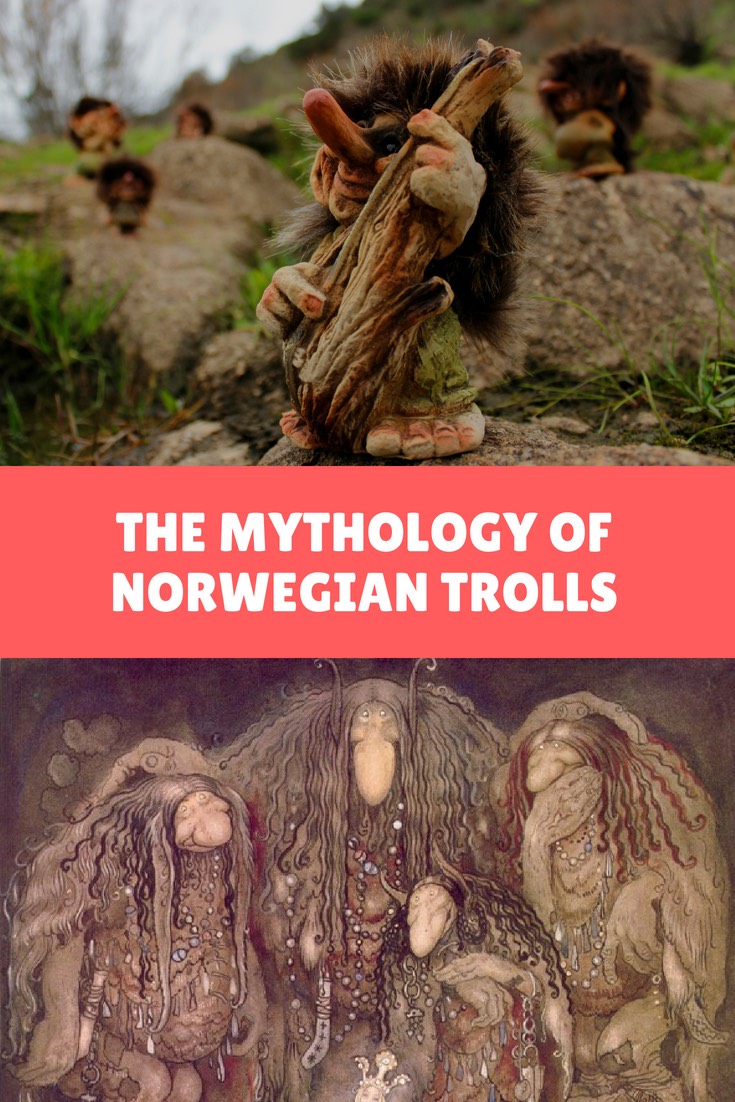


Love the troll story
Enjoyed the troll story.
Trolls are such an essential part of Scandinavian culture and folklore. I enjoyed this fun article and am sharing it to my Real Scandinavia Facebook page.
By the way, you’ve got a couple of small typos in this paragraph: The troll obviously didn’t want a while [should be whole] spring in his house and so they exchanged chores. The boy tended the fire while they [should be the] troll went to get water to make porridge….
Keep up the great work!
I love Trolls and the story’s behind them xxx
Omg i just bought my first set of trolls loving troll world already ✌️ absolutely love them.x
Good entry but don’t you got the same as in Sweden? Those superhuman, really beautiful and much better looking and doing trolls (a bit like later days elves). There are several encounters of troll daughters that get stuck outside their cave because of a hunter or woodsmen have thrown some iron in between making that gate not walkable. Often their got married and the husband is abusive and they get back away as the husband say something like “go back to the forest with you” and she returns to the mountain again.
I heard this story from my Grandmother 50 some years ago!! Long forgotten until I read this! Thanks for the memory!
love your site – thank you — always wonderful to see something regarding one’s heritage –
When I was very young I hated to go to bed, and my father would scare me by telling about the Trolls. I remember mamma telling me that the Trolls came to America to make sure that all the Norwegian children who lived here had to be good or be sent back to Norway without their. Mother or Father. I was a good girl, and I got to go to Norway when I was 16 years old, mamma and I visited family
Thank you for sharing information about different types of Trolls; and why it’s important to always carry cheese!
In Iceland we have the same storyes. Our ansestors brought ghem over.
Mostly trols are easily tricked out of there belongings.
I personsly think trol storyes are old memmory. Coming from time before scandinavia… and if you change the name Troll for Neandertal people it fits. Strong. Dont talk to much. Want to live in caves.
Easily tricked. Fighting for existans. And geting slaind by our ansestors Odin and his lot.
I agree – I think the same goes for the pixies in Scotland (suspiciously similar word to Pictii) – the indiginous people would have been smaller, darker, mostly living in hills, woods and remote places, amazingly skilled in woodcraft and thus able to seemingly melt away and vanish. They would have used weapons of bronze or stone, and the newer, stronger, iron weapons would have been key in overcoming them, leading to the saying that they feared iron and that iron was bane to them.They would also have been closer to the Earth and nature than later people, living off the land instead of shaping it to suit them with agriculture and animal husbandry.
I dont know many troll stories, but i have one of my own. Im had an actual good luck troll encounter from age 3 to 5. Can anyone direct me towards more info about these, and/or other witness accounts?
We live near Lake Superior in the US and have good luck trolls in the house. A young lady staying with us noticed them. We spoke with one, Bert, and he said they liked our crystals. He mentioned 4 types of troll and as far as I can tell, they are Giants, ogres, trolls and little trolls. (Maybe Brownies? Thoughts? ) . And they are related to the keebler type looking tree elves, but they don’t get along (he refused to say why). The ones in our house were about 2 and a half feet tall with the black hair and eyes… pointy ears and button noses. They go underground in winter or migrate if they are older.. and they are vibrating faster than we are and also are 4th dimensional folks.. so that is why we don’t see them.. much like other fairy creatures, ET’s, angels, big beings and God etc. I feel privileged to have them here, even if I can’t really see them!
Interesting story. I’d love to heard more about your good luck trolls. How did your guest see them? I’m really interested in hearing more about your encounters.
I’m right now on the troll ladder it is so good I enjoyed the troll 🧌 story as well
I don`t care about your stupid replies! have you nothing better to do?!
That is mean.
Well, that’s a troll for you.
Liked the stories thanks from a believer
*plays imagine dragons*
My kids enjoyed this story, but they were quick to point out that the trolls didnt help Elsa, they helped Anna when Elsa froze her heart.
much intellect!
Thank you for a wonderful story. I am also fascinated by trolls and their history in Norway. Here is an article I wrote about Norwegian woodcarver Anton Sveen and his unique hand carved trolls: https://skolmen.wordpress.com/2017/07/18/anton-sveen-norwegian-woodcarver-1914-2009/
Are there any tales of trolls protecting people?
hi omg i love troll
The trolls in Norway have close relatives in Iceland where a lot of invisible beings do live. and a tribe of trolls that are bigger than humans but smaller than giants. The most famous troll in Iceland is Grýla she is the mother of 13 boys who think they are Santa Clauses and so do all the children of Iceland, The kids are terrified of Grýla, as around MidWinter, actually, the days leading to Christmas she, with the help of her big black cat snatches bad behaving children and makes people believe she is going to eat them. But she is in fact the most loyal guardian of Nature and her purpose is to reconnect those children with the origin, nature. When they have learned to love Mother Earth they can return back to the visible world in order to teach other children to love and care for nature. Grýla has one daughter, her name is SoBo it is a nickname for SoBoring, the name her oldest brother gave her as he did not like girls. But he also learned to love her just like everybody else, and nobody agreed to that name so they just call her SoBo. She is such fun and a loving personality, now she is curious to visit her Norwegian relatives, maybe she will one of those days. You can see SoBo on her FB page SoBo from the Hidden World.
in scotland we have some trolls. they are called Gob and Libya and are having a baby. Libya’s mum Morocco lives with us as well. You also have them in england.
also i have a puppet troll called Stiletta.
Went to Norway back in ‘77 & bought a troll in Stavanger & still have it, love that damn thing!
Went to Norway in 2013 loved the country and brought some trolls love the little creatures .looking forward to going back there to get some more trolls
Good writing
Trolls have tails! All the carvings and statuettes have them. My dad was Norwegian and when I went to Norway with him in ’97 I bought a great little troll to bring home. Love him. Reminds me of my dad now that he is gone.